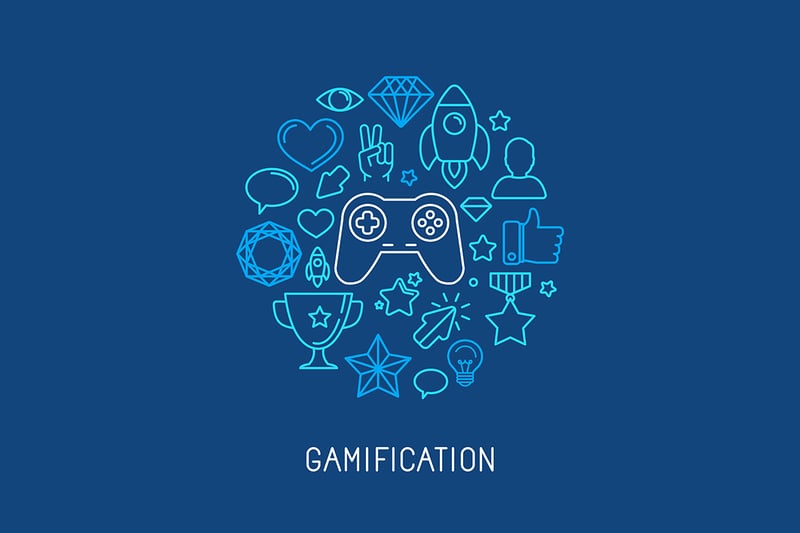Learning through gamification has become increasingly popular in recent years and for good reason. It has been shown to increase student engagement and motivation, leading to better retention of information and improved performance. But what does it mean?
It involves incorporating game elements into the learning process to make it more engaging and enjoyable for students. By doing so, educators can tap into the natural curiosity and competitive spirit of students, motivating them to learn and perform better.
Games
Games, video games, and simulations are all different forms of interactive experiences that can be used for learning and entertainment. Games provide a sense of progress and achievement, a social aspect, and the ability to escape reality. Video games are a type of game that is played on a screen and can include various genres such as action, adventure, and strategy. Simulations, on the other hand, are designed to replicate real-world scenarios and allow students to experiment with different outcomes. By using simulations, students can learn through trial and error, developing problem-solving skills and critical thinking abilities. Gamification is the process of incorporating game elements into the learning process to make it more engaging and enjoyable. It can include leaderboards, time limits, and other game-like features. By using gamification, educators can increase student engagement and motivation, leading to better retention of information and improved performance. These different forms of interactive experiences can all be used to enhance the learning process and make it more fun and enjoyable.
All simulations 'games' but not all games are simulations.
One of the key elements is the sense of progress and achievement that they provide. Whether you're levelling up, unlocking new abilities, or completing quests, games give you a sense of accomplishment that can be incredibly satisfying. Another factor is the social aspect of gaming, with many games featuring online multiplayer modes that allow you to compete or collaborate with others. Finally, the sense of immersion and escapism that games provide can be incredibly compelling, allowing you to forget about your real-world troubles and lose yourself in a fantasy world. All of these elements come together to make gaming an incredibly addictive and engaging experience.
Simulations
Simulations are a form of game-based learning that can be incredibly effective in helping students to understand complex concepts. Unlike traditional games that are designed purely for entertainment, simulations are designed to replicate real-world scenarios and allow students to experiment with different outcomes. For example, a simulation might allow students to run a virtual business or experiment with different scientific theories. By doing so, students can learn through trial and error, developing their problem-solving skills and critical thinking abilities. Simulations are especially useful for subjects like science, engineering, and business, where real-world experimentation can be expensive or dangerous. With simulations, students can explore these fields in a safe and controlled environment, providing them with a valuable learning experience that they will remember for years to come. Edumundo business decision simulations are models of real world business processes that represent the characteristics and functions of a business that students can manipulate over time. Through the simulation a teacher can focus the students on growing a particular metric or KPI. However this is education with a business decision simulation.
Gamification
Once the teacher sais that the team that earns the highest employee satisfaction wins, you have a game. Edumundo business decision simulation games have leader boards built-in for teachers to monitor and students to have fun. Another layer of gamification added during the implementation. You can introduce is a time limit on decision making; 30mins, 5 days, or even a month. . The gamification comes from the leader board and set amount of time for teams to make and lock in their decision. The BrightBirds gamification app developed by Edumundo is another example. It's a fantastic tool that allows educators to add gamification to any aspect of the higher education journey, not just to the academia of business education. With this app, educational institutions can make higher education more interactive and exciting, providing students with a fun and memorable learning experience. From application to graduation, the higher education experience is a complex network of smaller experiences that all add up to a formative part of many peoples lives. Along the way there are inductions, classes, coursework and assignments, clubs and societies or fraternities/sororities to join and on-site as well as digital landscapes to explore and engage with.
Whether we like it or not in the information age there is fierce competition for peoples attention and focus, which in turn makes it more challenging for people to remain engaged with one thing for very long. This is true in education as well and it is a game-changer. The pedagogical shift from content delivery to content curation is already in motion. Content co-creation between student and teacher would not be possible without education technology like Edubooks and other learning platforms.
Hand in Hand
Let's face it, learning and fun do not always go hand in hand. But thanks to gamification and technology, it's now easier than ever to make education a bit more entertaining. By incorporating game elements into the learning process, educators can boost student engagement and motivation, resulting in better retention of information and improved performance. Simulations are also a great way to help students understand complex concepts. And for higher education, gamification can make the whole university experience more interactive and exciting. As we shift from content delivery to content curation, education technology will play a crucial role in facilitating co-creation between students and teachers. Learning may not always be fun, but it's definitely better when it is fun and shared with others. Check out resources like Edumundo's business decision simulations and the BrightBirds gamification app if you want to learn more about our game-changing approach to education.


.png?length=300&name=unnamed%20(11).png)
.png?length=300&name=unnamed%20(7).png)
.png?length=300&name=unnamed%20(8).png)
.png?length=300&name=unnamed%20(6).png)

.png?length=300&name=unnamed%20(10).png)
.png?length=300&name=unnamed%20(5).png)
.png?length=300&name=unnamed%20(9).png)
.png?length=300&name=unnamed%20(4).png)
.png?length=300&name=unnamed%20(2).png)
.png?length=300&name=unnamed%20(1).png)
.png?length=300&name=unnamed%20(3).png)
.jpg?length=300&name=unnamed%20(2).jpg)





.png?length=300&name=loughborough-university-logo%20(small).png)





